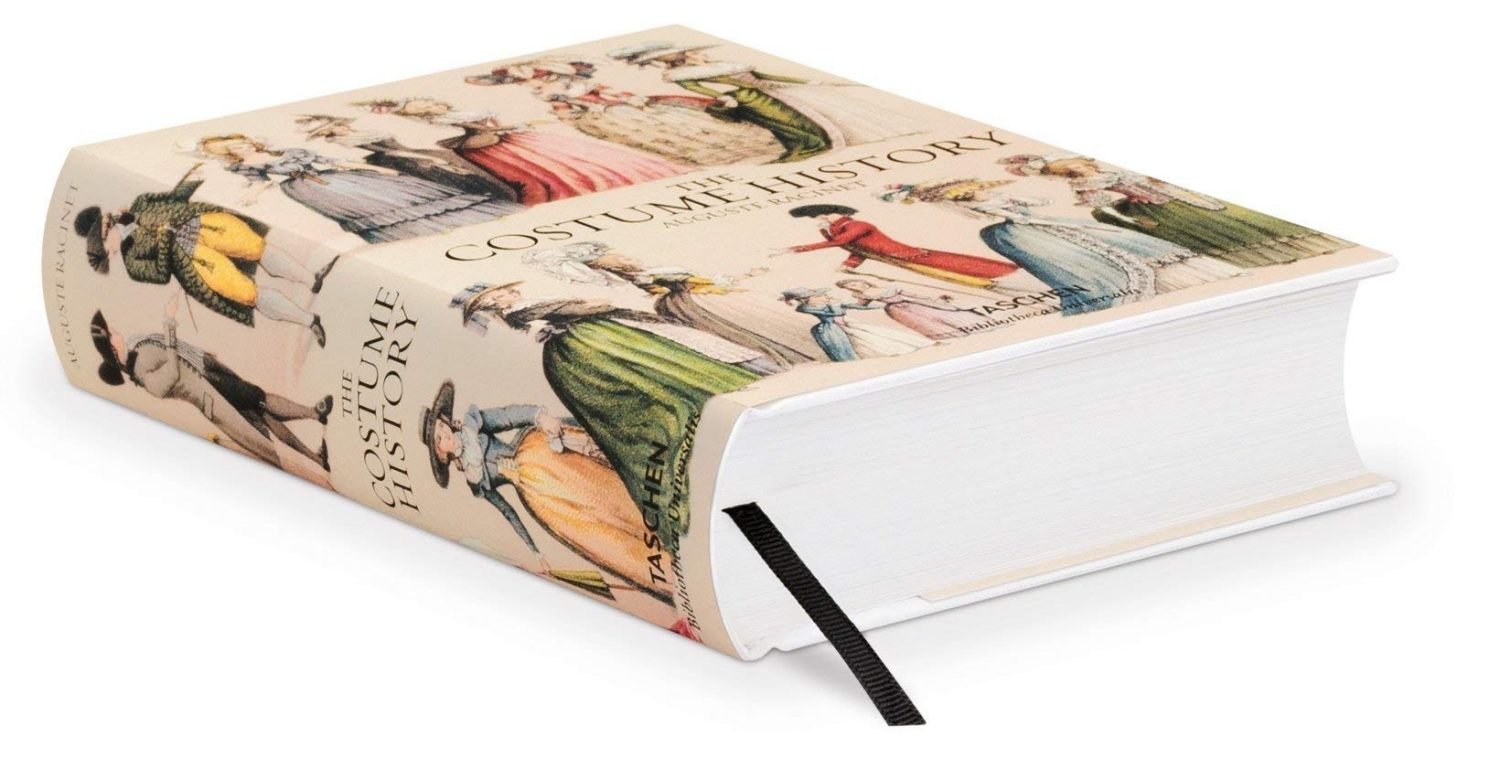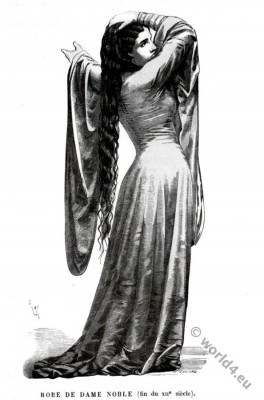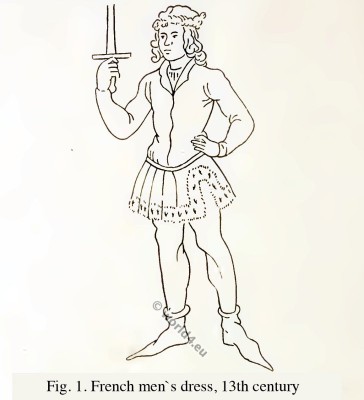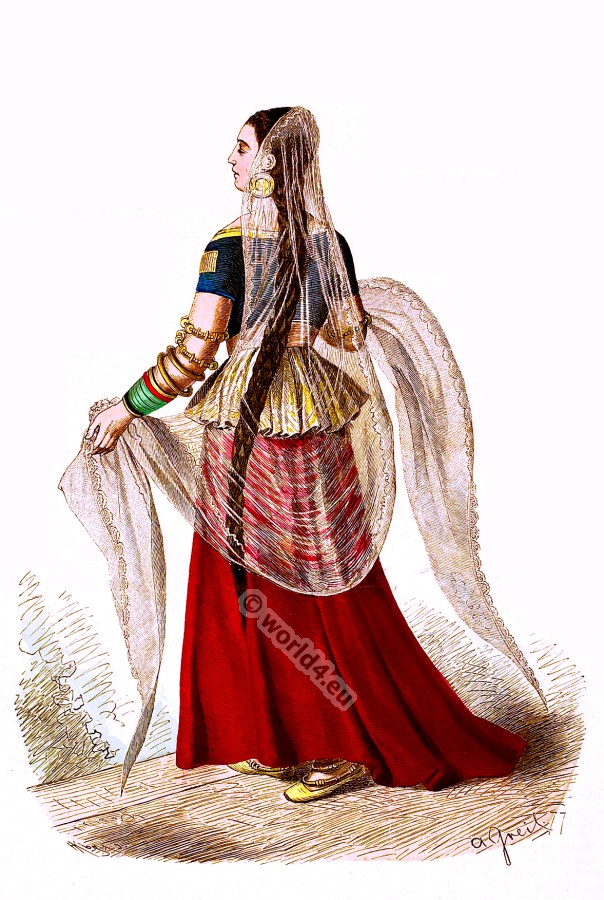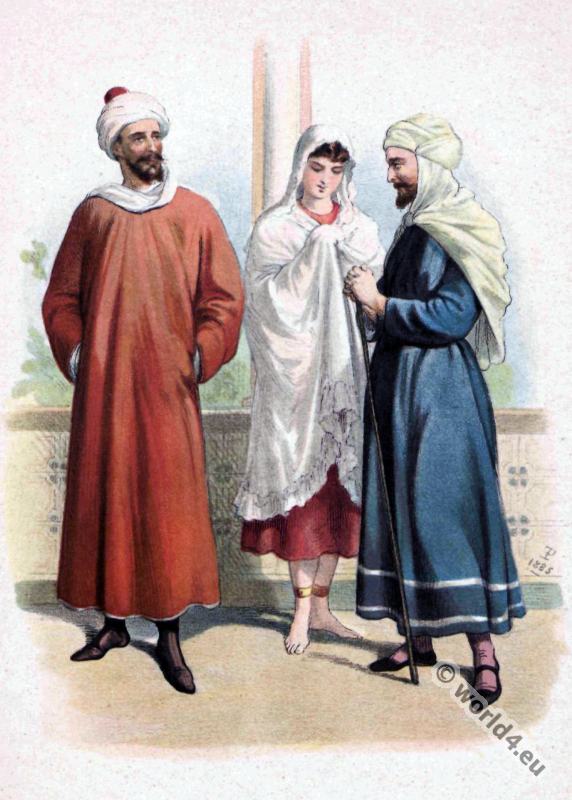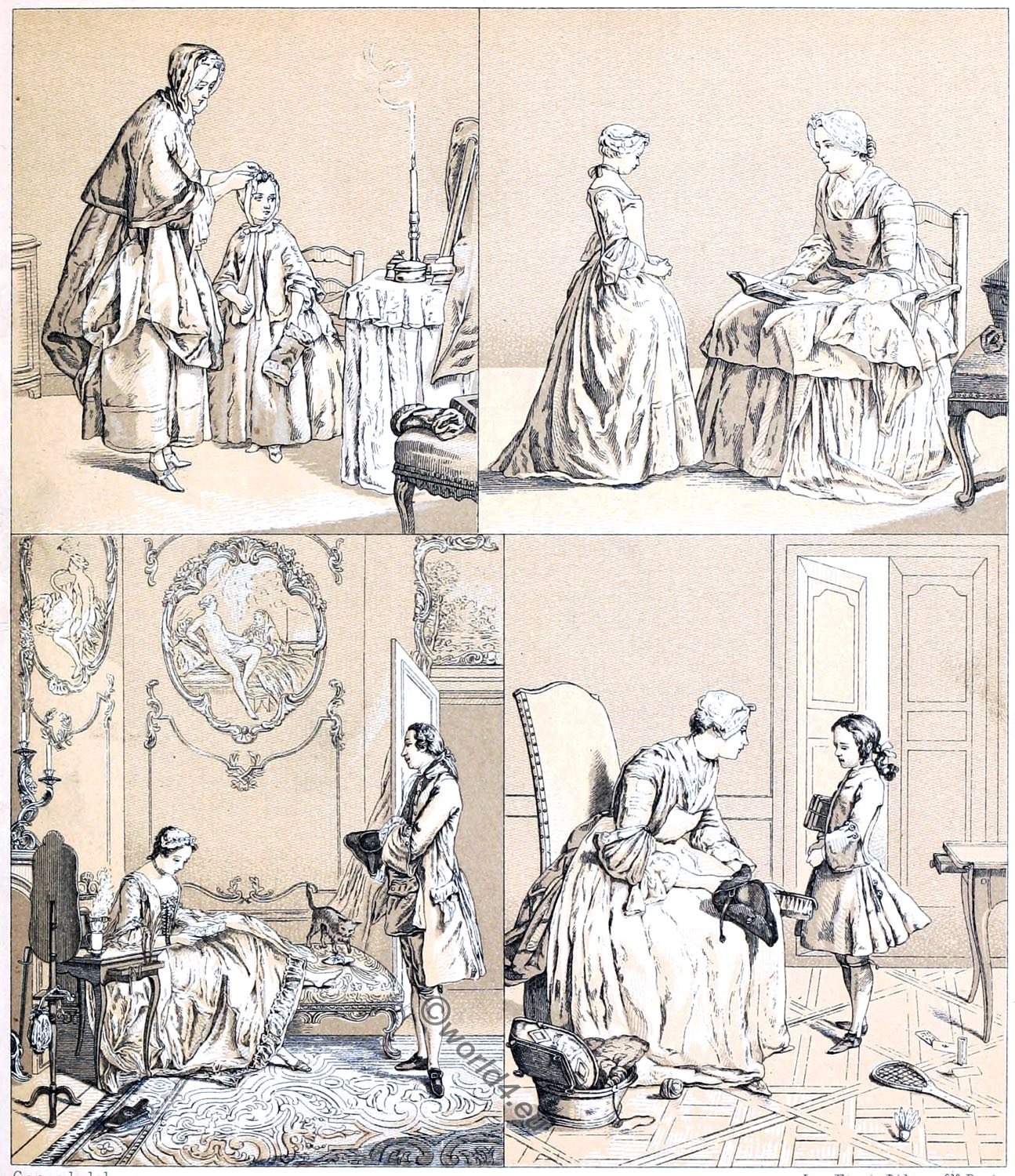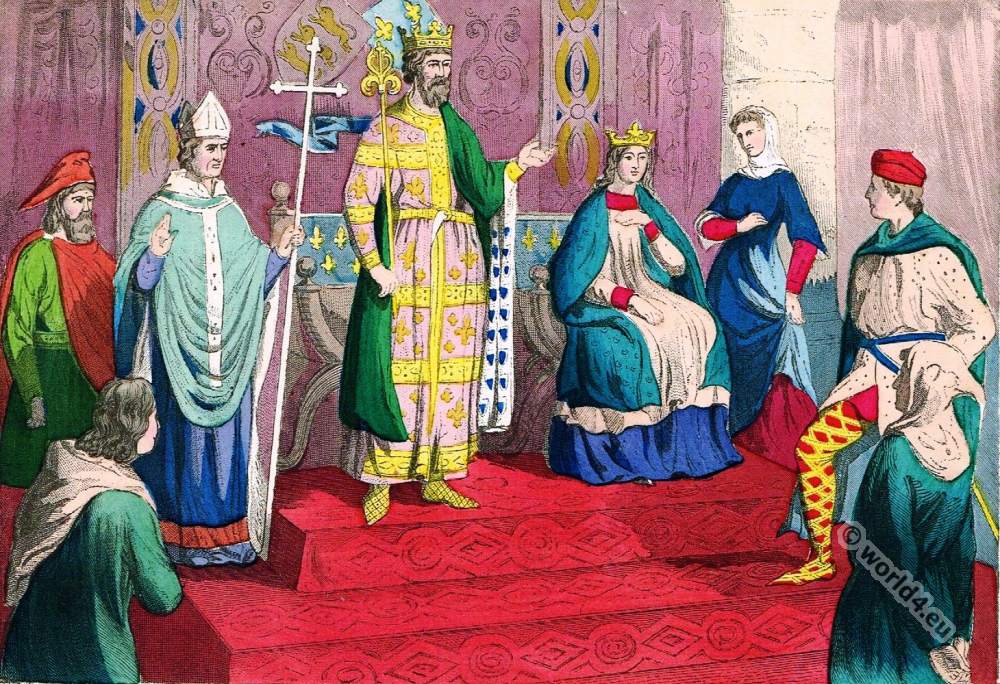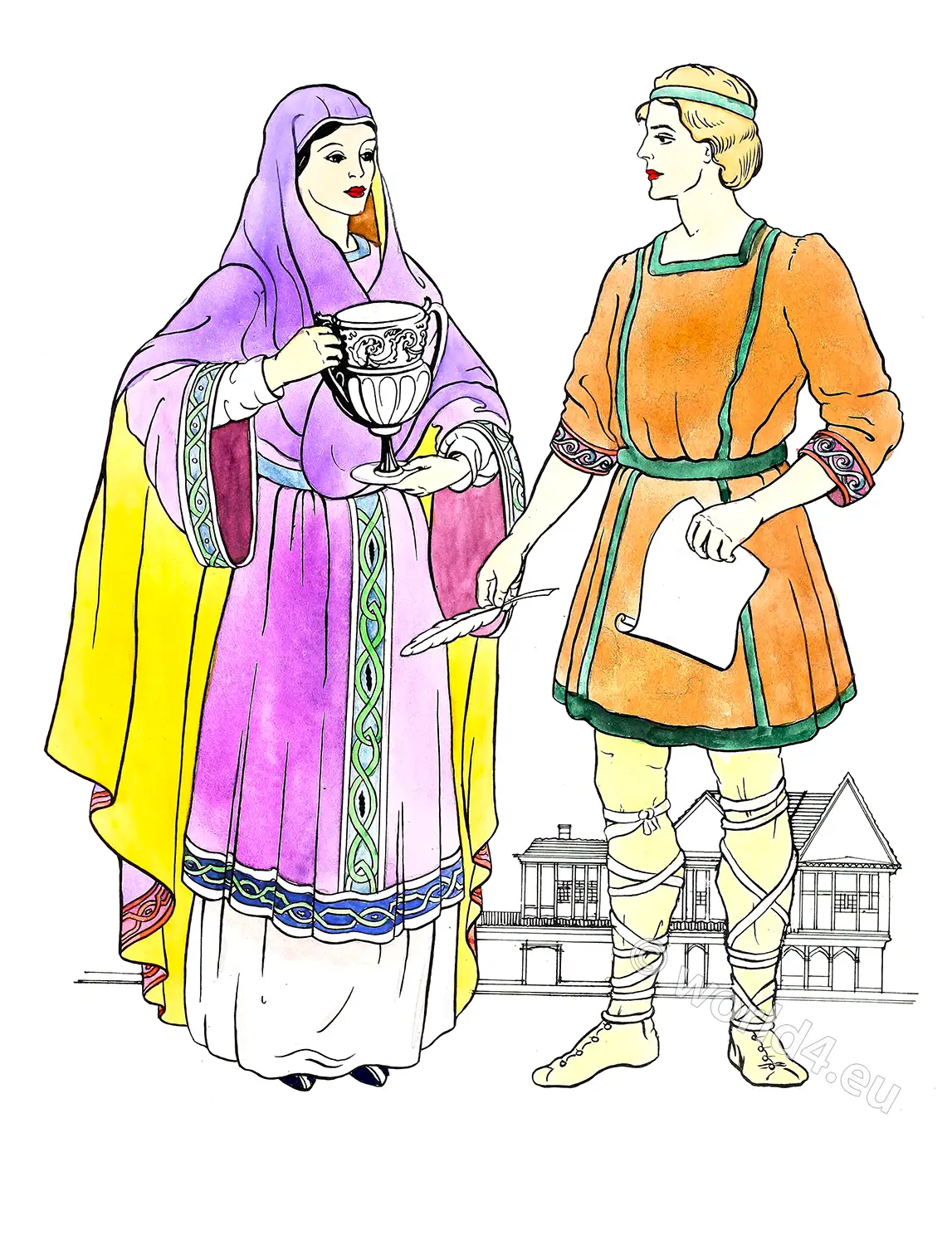Medieval clothing in France. 11th to 13th century.
In France, as in Germany, the dress of the eleventh century was a development from the fashions of previous periods, though here the change was accomplished more quickly. This was already so evident at the opening of the thirteenth century that from that time onward French fashions became the standard for the upper classes among all the peoples of Central Europe.
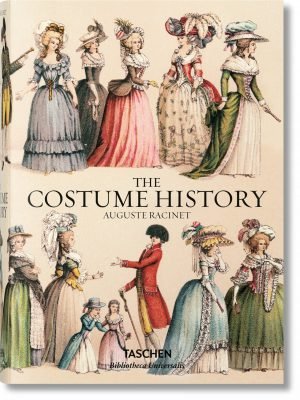
Auguste Racinet. The Costume History by Françoise Tétart-Vittu.
Racinet’s Costume History is an invaluable reference for students, designers, artists, illustrators, and historians; and a rich source of inspiration for anyone with an interest in clothing and style. Originally published in France between 1876 and 1888, Auguste Racinet’s Le Costume historique was in its day the most wide-ranging and incisive study of clothing ever attempted.
Covering the world history of costume, dress, and style from antiquity through to the end of the 19th century, the six volume work remains completely unique in its scope and detail. “Some books just scream out to be bought; this is one of them.” ― Vogue.com
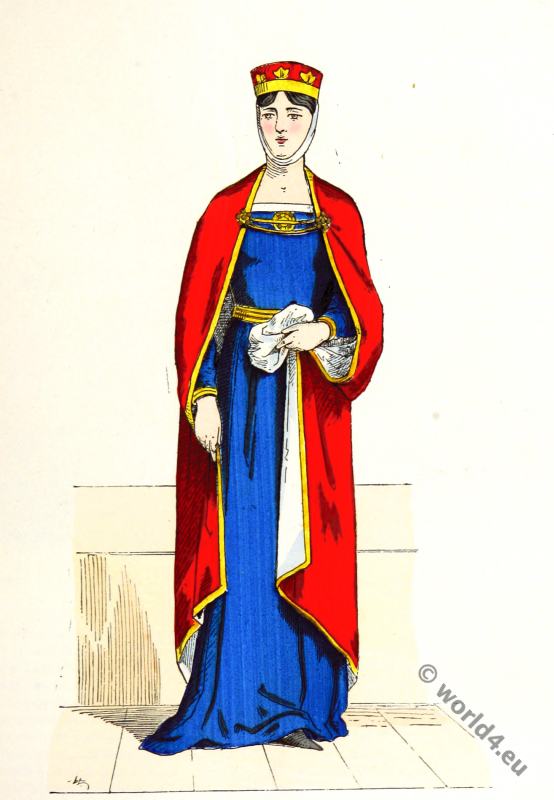
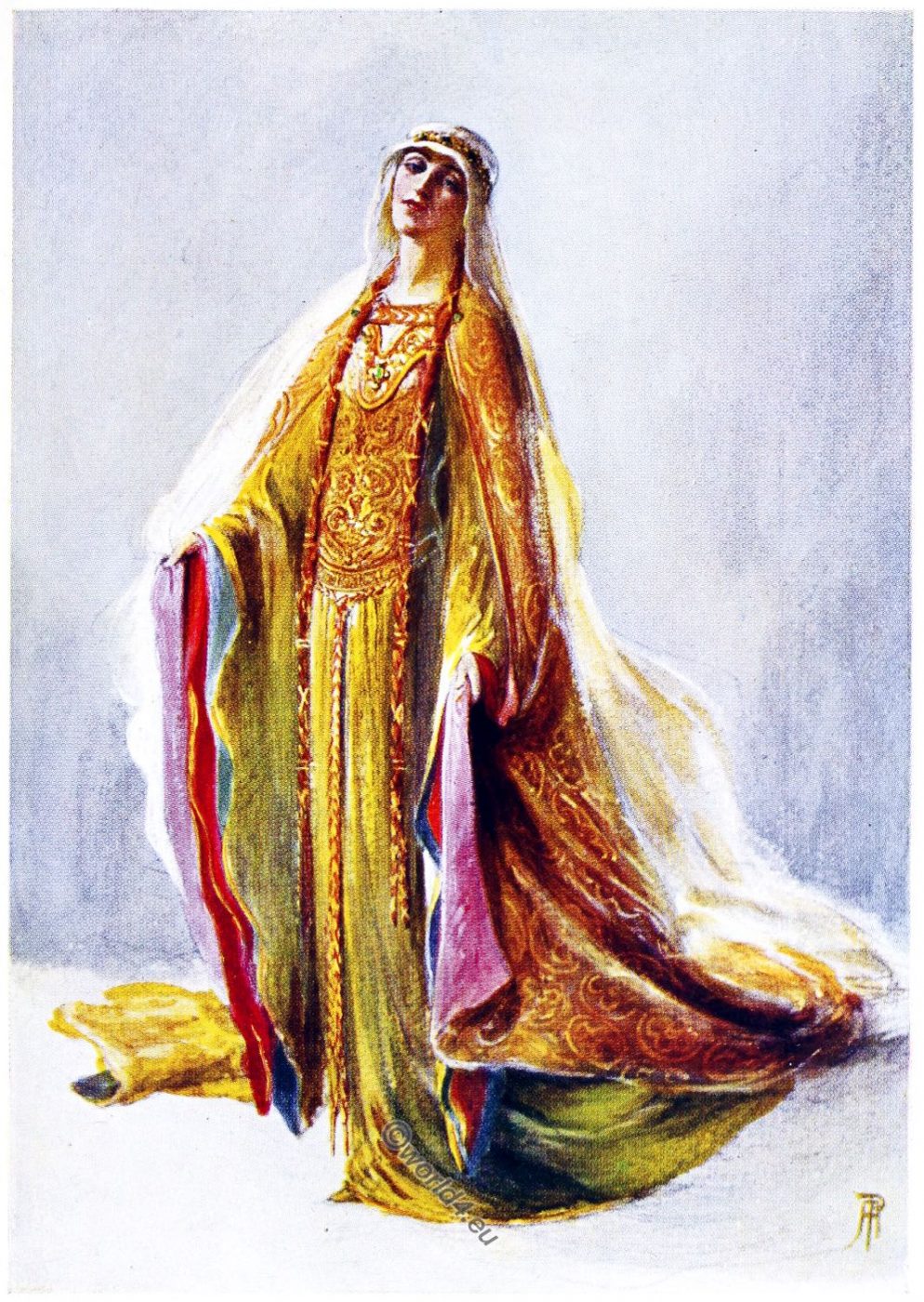




In the eleventh century the style of the men’s long, tight-sleeved tunics and of their leg-wear was exactly the same as that prevailing in Germany. In France, as in Germany, the dress of the upper classes was distinguished from that of the lower orders by a superior quality of material (silk), by the length of the garments, and by richness of trimming.
During the twelfth century women’s dress remained for a considerable time without change. Women were wearing at that time a long, fairly wide over-garment, the cotte hardie, held by a girdle. Men wore the same garment. It was high at the neck, and could be tightened by means of a draw-string. Over this was worn another similar garment or a cloak. The headdress was a kerchief.
The men also wore a long-sleeved tunic reaching to the knees, tight hose fastened by tapes to a waist-belt, and a cloak fastened by a buckle or brooch. The footwear consisted of ankle-shoes or high boots. All these were similar to those worn in Germany. Women’s dress, however, gradually underwent so many slight alterations that it finally took on another character.
The coat no longer showed a gradual increase in width from the shoulders to the foot. It was now made to fit tightly under the bust (Fig. 173), the fullness beginning at the hips. In order to secure this tight fit both front and back pieces were shaped from the bust to the hips ; the waist was made with a broad band, through which ran strings which could be tied behind as the wearer thought fit.
The other great change from previous fashion was in the sleeves. These were much wider at the top, but as tight as before at the wrists, where they were now buttoned. Another style of sleeve (Fig. 176) fashionable at this time for over-garments was very tight from the top to a point more than half-way down the forearm, where it suddenly became extremely wide.
This wide portion was a separate piece sewn to the sleeve proper as a cross-piece, so that its length made the width of the sleeve. In the twelfth century the cloak was rarely worn by Frenchwomen. It had been almost entirely supplanted by the ordinary over-dress. The headdress at this time was either the kerchief as before or an actual cap. Women’s footwear was still exactly the same as that worn by the men.
Male dress in the 13th century.
In the thirteenth century the style of long over- and under-garments remained unchanged, except that the sleeves were now very long and wide or omitted altogether. But when these clothes ceased to be the ordinary wear and were used only on ceremonial occasions it became the fashion to wear only one coat.
This coat, le pourpoint, was made in various styles, which differed in the material, the trimming, or the cut. It continued to be made ever shorter and closer-fitting, till toward the end of the century it had become a garment for the upper part of the body only, and was very tight-fitting (Fig. 1).
Various changes were also made in the cut. The coat still consisted of two pieces, back and front, but the latter was now partly or wholly open, and was fastened with hooks and eyes. To obtain as close a tit as possible both pieces were shaped at the sides, as were also the sleeve-holes, which were now either round or oval.
The result was a sleeve which was greatly improved, because it now had to be of the proper width in order to be comfortable both above and below the shoulder. Therefore, although the sleeve had still only one seam, it was now cut sharply convex above the shoulder and concave underneath. When the sleeve was sewn into the garment, the concave part was exactly at the armpit. The seam ran down the front.
Speaking generally, the tunic worn by the knights retained the shape it had had in the twelfth century, although it too was now closer-fitting and shorter. The chief difference was a considerable increase of trimming.
This period saw a great improvement in the dress for the lower limbs, called les chausses. Till now the hose had always been separate, but about this time it became the fashion to join them at the top, thus making actual trousers, which covered not only the legs, but also the lower part of the trunk.
This new practice, however, was attended by great difficulties. The inelastic materials hitherto employed impeded the free movement of the limbs and made it almost impossible for the wearer to sit down. And even although an attempt had been made at the end of the previous century to meet this difficulty by using elastic materials, tailors had not yet completely succeeded in preventing the strain at the seat. Once, however, the fashion had been started of joining the separate hose into one garment by running a seam from back to front between the legs, the authorities, both ecclesiastical and secular, used every endeavour to bring the new style into universal use.
They condemned the previous fashion as indecent, and so the new practice of wearing trousers tied round the waist with a belt made rapid headway. These trousers, entirely closed at the top, were made of wool, linen, or silk of the brightest colors available. Indeed, the legs were frequently of different colors. This fashion was especially popular with the the knights, who were thus able to reproduce their own colors in their trousers, and with the militia of the cities when they took the field, for they could thus wear the city colors.
The cloak, le manteau, almost entirely ceased to be worn during the thirteenth century. When it was still worn it was so much shorter that it came only a little below the hips. The shape too was greatly altered. It was no longer segment-shaped, but sector-shaped (mostly two-thirds of a circle), so that the top of the cloak was not now a straight, but a broken line. By and by the sides, where the cloak was pulled up by the shoulders, were cut longer than the back and front ; the cloak was also taken in above the shoulders at both sides. It thus not only fitted better at the neck, but lay better and more securely at the shoulders ; there was also less strain. (See Fig. 2.)
The headdress of this period was a cap resembling a cowl, called a chapel, worn with its lower edge turned outward, and a hood called le capuchon. This latter was much worn, either under or over the cap, or even by itself. It varied in shape according to the manner in which it was to be worn ; it was made either of a front and a back piece or of two side-pieces. (See Figs. 3, 4.)
The former type, which was often attached to the cloak or made long enough to serve as a cape, was closed all round except for an opening for the face. It was fairly wide, and could easily be brought over the head, seeing that it did not fit closely at the neck. This form was called la chape, and was worn in rough weather over some other headdress in order to protect it, or on the occasion of some late revel in order to conceal the face. At ordinary times it was flung back and lay round the neck like a wide ruffle (Fig. 5).
The second type of hood, l’aumusse, which was also frequently worn as sole headdress, fitted somewhat closely round the head and neck, and was therefore quite open in front, but it had strings or buttons by means of which it could be closed. It sometimes came down only as far as the shoulders, but was often long enough to serve as a cape, coming half-way down the upper arm.
Source: A HISTORY OF COSTUME BY CARL KOHLER EDITED AND AUGMENTED BY EMMA VON SICHART. New York 1813/1930
Discover more from World4 Costume Culture History
Subscribe to get the latest posts sent to your email.

